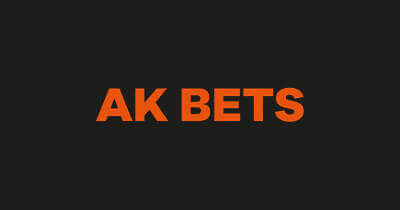Unibet
Popular for their appealing website interface and with an extensive list of markets, Unibet is one of the best horse racing betting sites in the UK.

- Money back as bonus if first bet loses
- Consistent promos for customers new and established
- Broad range of antepost markets throughout the year
Bottom line:
Unibet combines a modern-looking website with regular and rewarding promotions. Regular horse racing gamblers will be familiar with their impressive range of antepost markets.
Why we like Unibet
Unibet is a contender to be considered the best horse racing betting site for the UK. The horse racing section of the website is well-structured, with the use of colour contributing to a good customer experience. You can delve deep into antepost odds, where there is a great range of markets, or pick out any race from around the world and give the bookie’s enhanced odds feature, Uniboost, a go.
What Unibet offers you
- Uniboost daily for enhanced odds: You can boost horse racing odds three times per day at Unibet.
- Frequent and rewarding promos: Unibet often introduces new promotions for both new and current customers.
- Future bets: With antepost markets available months in advance, you can back your pick early to unlock the best value price.
- Specific offers for big races: Unibet typically brings out promotions specifically for the biggest events on the calendar, such as the Cheltenham Festival, Ascot and the Grand National. One example from Cheltenham is Gold Cup free bets.
AK Bets
AK Bets began life as an on-course bookmaker. They developed very quickly and now provide an online betting service through their website and mobile apps.

Bottom line:
AK Bets has a great service for punters with competitive odds and a great website and app.
Why we like AK Bets
Using the AK Bets website or app is a relaxed experience and horse racing punters can benefit from their price movement graphic.
What AK Bets offers you
- Good value odds: You will often find AK Bets have competitive odds..
- Odds shift graphic: AK Bets keep you up to date with the latest price shifts.
- Great app: AK Bets have a user friendly app and a great website. The bookie offers a fantastic betting platform whether on the app or the website.
- Strong reputation for horse racing: Established as an on-course bookie, AK Bets are well respected within betting and horse racing circles.
- Live Streaming: Live streaming of horse racing
Star Sports
Brighton based Star Sports was launched in 1999 as Star Racing in 1999. Originally an on-course bookmaker, grew quickly. soon outgrew its on-course roots. Star Racing was rebranded as Star Sports in 2009 to reflect the wider portfolio of services offered to its clients. They now provide an online betting service through their website and mobile apps, however, they boast a number of exclusive services which allows them to brand themselves as a luxury bookmaker.

Bottom line:
Star Sports has a great service for punters with competitive odds, a great website and app and a fantastic blog-
Why we like Star Sports
Using the Star Sports website or app is a relaxed experience and horse racing punters can benefit from their price movement graphic. They have a great social media presence and a great blog.
What Star Sports offers you
- Good value odds: You will often find Star Sports have competitive odds..
- Odds shift graphic: Star Sports keep you up to date with the latest price shifts.
- Great app: Star Sports have a user friendly app and a great website. The bookie offers a fantastic betting platform whether on the app or the website.
SpreadEx
Best known for its spread betting service, SpreadEx also offers fixed odds for the core sports, helping it to become a favoured site among horse racing punters.

- Odds for every race across the UK
- Often has better odds than bigger name bookies
- £50 bet bonuses available for new customers
Bottom line:
SpreadEx gives great welcome bonuses and provides excellent odds throughout the horse racing schedule.
Why we like SpreadEx:
SpreadEx covers everything you would want from a bookie. Punters are after value first and foremost, which SpreadEx has thanks to their high odds. Promotions are easy to find and use, plus the website is hard to fault. The option to switch between spread betting and fixed odds is a nice bonus for some bettors, too.
What SpreadEx offers you
- Exceptional fixed horse racing odds: When pitted against the more well-known names in the industry, SpreadEx’s odds often compare favourably.
- Informative website: You will find a lot of detail on a SpreadEx betting page, including form and weight.
- ‘2nd to a rag’ insurance: If your horse finishes second to a 33/1 or longer outsider, you will receive money back as a free bet.
- Option to switch between fixed odds and spread betting: It is an easy process to move between spread betting and the traditonal sportsbook at SpreadEx.
Check out the best betting sites in the UK with Betting.com.
How our experts choose the best sites to bet on Horse Racing
Punters have various factors to ponder when evaluating the best horse racing betting sites. The website itself is important, of course, as are the odds available, promotions, and the quality and accessibility of customer service. To be ranked among the top horse racing online betting sites, bookmakers must score highly across the board.
Sam Cox: I am looking for horse racing betting sites in the UK to have a variety of promotions available throughout the year. Websites should be responsive and easy to digest, while processing withdrawals must be smooth and swift.
Compare the best Horse Racing betting sites
Horse racing is a focus for the vast majority of sportsbooks in the UK. With racing taking place through all seasons and all over the globe, bookies have a lot of action to cover. Bettors are spoilt for choice amid an ocean of horse racing promotions and offers.
Selecting the best horse racing betting site in 2025 is about the whole service. The answer might vary from punter to punter, depending on their betting. We’ve compared the top sites to bet on horse racing:
| Site Name | Betting.com Rating | Best For | Full Review |
| Unibet | 4.8/5 | Antepost betting | Review |
| Bet365 | 4.6/5 | Live streaming | Review |
| AK Bets | 4.5/5 | Odds shift graphic | Review |
| Star Sports | 4.3/5 | Great app | Review |
| SpreadEx | 4.2/5 | High odds | Review |
| William Hill | 4.2/5 | Depth of Coverage | Review |
How to choose the best site for you
Identifying the best horse racing betting sites isn’t an easy task with so many options out there. You can only get a real idea of what works for you by trying sites out and extensively researching their promotions.
When looking at horse racing online betting sites, these seven points are important to keep in mind:
- Safety comes first: To keep your cash and data safe, you should always play on licensed and secure betting sites.
- Compare welcome offers: Not all welcome offers are the same. Each punter has different betting habits and will value different things when signing up to a new bookie, so make sure you find a site with a welcome offer which suits you.
- Analyse their horse racing prices: Before diving in, have a look through the horse racing markets to get a feel for the value on offer. All bettors want the best odds. It is worth comparing between books to see which bookies have the most competitive prices.
- Consider payment and banking options: Making sure you can deposit and withdraw money safely and quickly is very important. It is worth seeing which horse racing bookmakers offer certain payment methods and comparing the fees involved and timescale for receiving your winnings.
- Renowned bookmakers are worth it: Some bookmakers have a better reputation than others. The best horse racing betting sites will retain customers through the quality of their service, and this is often a good sign when choosing where to place your wagers.
- Betting on the move: Mobile apps are a huge part of the bookmakers’ offering. Being able to scroll through odds, live stream and contact customer service through your phone or tablet is useful.
- Try signing up: Registering and placing your first bet with a new bookmaker should be a quick, smooth process. The best way to get to grips with a site’s sign-up process is to try it out for yourself.
Betting on Horse Racing explained
Betting on horse racing has been popular for centuries, and there is no sign of that changing any time soon. Punters who like to bet on horse racing have races to wager on all over the world throughout the year.
Odds
The best horse racing online betting sites in the UK will have extensive odds available each day of the week. Keep an eye out for odds movement in the build up to races and major events.
Picks
Just like selecting your preferred horse racing bookmaker, there is a lot to consider when making horse racing picks. Schedule, weather and form are all relevant. Different bettors will prioritise specific pieces of information when making their horse racing picks.
Types of Horse Racing bets
Horse racing bettors have a catalogue of options available. Alongside special markets offered by bookmakers and antepost odds to lock in a price in advance of a race, punters can select anything from a straight-forward win wager to more complicated bets like a Goliath Flag.
Winner
Just as you’d expect, betting on the winner is about backing a horse to finish the race first. Some betting sites will provide insurance in certain circumstances, like when a massive outsider wins the race.
Each-Way
Backing an each-way wager means your winnings are calculated using a fraction of your pick’s price as you receive a payout whether they win the race or finish in the top few places.
Trixie
Comprising three doubles and a treble, a Trixie is three selections and four bets. At least two of the selections must land to guarantee a payout.
Yankee
A Yankee is made up of just four selections but comes to 11 bets – six doubles, four trebles and a fourfold. Like the Trixie, at least two of your picks must come in for a payout.
Horse Racing betting strategies
It can take time to land on a favoured horse racing betting strategy. Figure out which sort of wagers you prefer to place and do some research before each race to inform your punts.
Popular Horse Racing events to bet on
The biggest horse racing events see vast sums wagered across the UK. These two races standout above the rest:
- Cheltenham Gold Cup: First run in 1819, the Gold Cup is competed for at the end of Cheltenham Festival each March. The Gold Cup is a steeplechase over 5.3 kilometres, and a chance for jockeys and trainers to write their names into the history books. Prepare for the race by checking out our list of the best Cheltenham Festival betting sites .
- Grand National: The Grand National takes place at the iconic Aintree Racecourse in April each year. Considered the ultimate test for horse and jockey, the Grand National attracts bettors who rarely take much notice in horse racing. Hundreds of millions of people watch the race, which has been broadcast on free-to-air TV in the UK since 1960. Make sure you are familiar with the best Grand National betting sites before the big day.
Check out the best betting sites in the UK with Betting.com.




